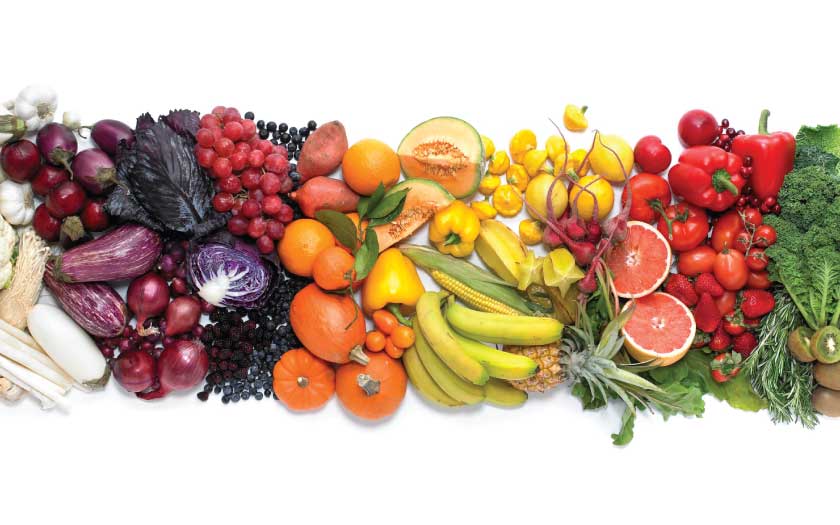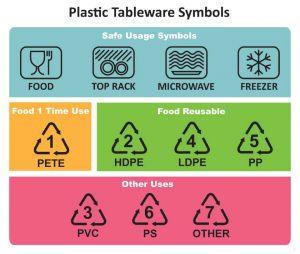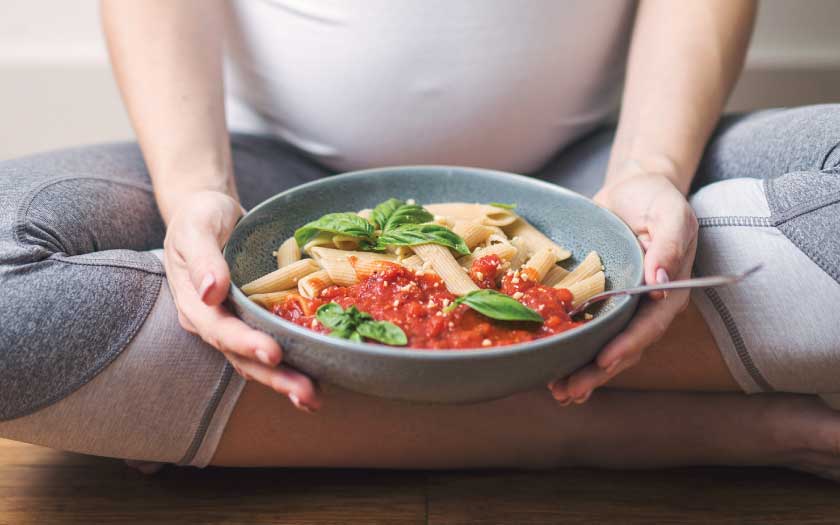Did you know that more than 60% of us on this planet are unwittingly ingesting loads of chemicals each day due to the pesticides, herbicides, antibiotics, and other chemicals used while growing our food? We haven’t even touched on processing and storing food yet!
While we’re all at risk, babies in their mother’s womb are at the most unfortunate end of this situation for their moms could be contributing to their future health issues. We hope you pay due attention to this, for it’s never too late to turn things around!
Chemicals are widely consumed in the form of pesticide residues on fruits, vegetables, and crops. They can also be consumed through affected dairy, poultry, and meat products. For a pregnant woman, these chemicals can easily reach her growing fetus. It can also be passed to her baby via her breast milk.
The solution is not just healthy food, but organic food. This means food that has been grown or produced without the use of chemicals.
Did you know?
Chemical-laden food can permanently change the brain chemistry of a vulnerable fetus, leading to future behavioral disorders, learning disabilities, and even long-term damages to the brain and nervous system. These foods can also contribute to a spectrum of health problems including cancer, lung disease, reproductive problems, and potential disorders within the immune system.
What organic food represents
Certified organic produce is grown without using harmful pesticides or synthetic fertilizers. Likewise, certified organic meats, eggs, poultry, and dairy come from animals that are allowed access to the outdoors and have not been given antibiotics and growth hormones. Such animals are only fed with organic feed.
The thing about organic food is, they’re not just good for your health and that of your unborn baby, but the whole practice of organic produce itself is beneficial for the environment and ultimately, our planet. Organic farmers use natural methods in all areas of farming such as crop rotation and pest management and avoid the use of toxic chemicals which can persist in the environment for years. This way, our water sources, land, and air are protected from contamination.
Regardless of where it’s grown, organic foods have to meet with a set of standards to be certified as organic. During growing, handling, and processing, there should be:
- No pesticides
- No chemical fertilizers
- No weed-killers

Food also can’t be:
- Genetically modified
- Injected with or given hormones or antibiotics (for chicken, beef and pork)
While the availability of organic foods seems to be of a little issue nowadays and there are organic sections found in most supermarkets, organic farms must however adhere to strict standards. The overall costs of food production and handling are higher compared to conventionally grown and produced food and this is ultimately reflected in the price tags of organic products. Hence, while it would be highly beneficial for pregnant moms to go fully organic, but not everyone can afford to do so.
USDA Organic Seal guidelines
- If the food product is labeled 100-percent organic, it has to contain only organically produced raw or processed products
- Foods that are labeled organic must contain at least 95 percent organically produced ingredients (excluding water and salt)
- If the food product label reads made with organic ingredients, it must contain 70 percent organic ingredients
Note too, that foods that are only labeled organic on the ingredient side label and not the main label, contain less than 50 percent organic ingredients only.

You don’t have to go all organic
The health benefits of fruits and vegetables mean that’s it’s unwise to omit them for the sake of avoiding pesticides, but since it’s not always possible for most pregnant moms to be eating organic, it’s always good to know how to make the best choices in foods. The Environmental Working Group, an American environmental organization that specializes in research and advocacy in the areas of toxic chemicals has identified two groups of fruits and vegetables according to the pesticide residues present in them. They are called the Dirty Dozen and the Clean 15.
The Dirty Dozen
The dirty dozen consists of foods that are most contaminated with pesticides and/or with pesticide residues which are difficult to clean off. Needless to say, it’s best to buy these from the organic section of your supermarket.
- Apples 7. Spinach
- Peaches 8. Sweet bell peppers
- Nectarines 9. Cucumbers
- Strawberries 10. Cherry tomatoes
- Grapes 11. Snap peas
- Celery 12. Potatoes
Note: Added to this list are chillies and kale.
The Clean 15
This list consists of fruits and vegetables that are the least contaminated with pesticides. As such, they need not be organic.
- Avocados 9. Papayas
- Sweet corn 10. Kiwi
- Pineapples 11. Eggplant
- Cabbage 12. Grapefruit
- Sweet peas (frozen) 13. Cantaloupe
- Onions 14. Cauliflower
- Asparagus 15. Sweet potatoes
- Mangos
Other foods that are best to buy organic are:
Meat. Organic meat means that the animal was grass-fed, free from antibiotics, and growth hormones. They are also generally lower in calories and fat. Organic meats are also believed to be higher in protein than other meats.
Poultry and eggs. Look for free-range poultry, for they are less likely to carry dangerous diseases from being kept in cramped, disease-breeding quarters.
Be smart about your food choices
As mentioned earlier, an exclusively organic diet may be out of the question for many, so here are some other ways that can help reduce your exposure to pesticides.
- Wash all fruits and vegetables before consuming or cooking. Many safe, trustworthy products can be used for this purpose.
- When using fruits that aren’t organic, always peel them first.
- Discard the outer leaves of foods like lettuce and cabbages before use.
- Pesticides accumulate in fatty tissues, so remove visible fat from meats and remove skin and fat from poultry too.
- Go for organic butter, cheeses, and milk. Alternatively, you could go for low-fat versions.
Cook @ home more often
If you’re in the habit of dining out, ordering in or consuming processed packaged foods, it’s time you make a change for the better, for you can never be entirely sure what you’re eating if you keep doing so. Start preparing your meals at home with fresh, whole ingredients for it gives you maximum control over what you eat.
That way, you can ensure an optimally safe and healthy diet during your pregnancy. In the long run, healthy cooking is after all a necessary parenting skill for all future baby food prep, school lunches, and more that you have to wait ahead of you. Practice now and be a pro in no time!
Raw food alert
When it comes to raw foods, never take it for granted that just because it’s organic it’s completely safe to consume. Though it won’t be treated with pesticides, organic foods can still be contaminated with bacteria. Always wash your produce before consuming and cook your meat, poultry, and fish thoroughly too.
Contamination from the seas/waters
Fish contain omega-3 fatty acids, an important nutrient for both mom and baby’s heart and immune health and baby’s brain development, so it should be a good thing to include in your diet. The thing is, many types of fish in the supermarket or wet markets are contaminated with mercury, toxic industrial compounds (such as PCBs), and pesticides. These are dangerous substances that can cause problems ranging from brain and nervous system damage to cancer, and they affect both mom and her baby. Safe fish choices for pregnant women include farmed trout or catfish and wild Alaskan salmon and halibut.
Clean out your diet!
Always try to select foods that are minimally processed and contain few or no additives, preservatives, pesticides, hormones, or other chemicals. Making a habit of reading food labels will keep you more alert on what’s in the package of food you’re about to purchase.
Prepping, serving and storing: Watch those plastics
The household with no plastic ware in its kitchen cupboards is certainly a rare one, but these days, striving to be rare may be a good thing! Plastic containers and utensils may contain toxic compounds that can migrate into food, especially when your meal and/or the plastic is hot. As exasperating as it sounds, you can still be in control of the situation — exercise caution when using plastics while pregnant! Here are a few tips.
Heating up food. Whenever possible, opt to reheat food on your stovetop instead of using a microwave oven. If you must use it, however, refrain from microwaving food in plastic containers of any kind. Use microwave-safe glassware instead. Reheat food on the stove.
Serving. Don’t serve or store foods in plastic containers, especially hot or acidic foods or those containing fats or oils. If you do choose to store food in plastic containers, use only ones with the following codes:
#2 HDPE (High-Density Polyethylene);
#4 LDPE (Low-Density Polyethylene);
#5 PP (Polypropylene) for the purpose.
The code or number that is usually moulded at the bottom of each plastic product.
No PETE and PC. During pregnancy, it’s safest to skip products packaged in Polyethylene Terephthalate (PETE) plastic, like disposable water, juice, and soda bottles. Studies show that under certain conditions PETE can leach unhealthy amounts of antimony, a toxic metalloid that causes health effects similar to arsenic. Do keep in mind too that PETE bottles are never meant for reuse. Polycarbonate (PC) plastic containers and bottles are also harmful to use during pregnancy for they release bisphenol-A (BPA), a common endocrine-disrupting agent, into the foods and liquids
stored inside.
Cleaning plastic containers. Don’t wash them in the dishwasher and/or with dishwasher detergents containing chlorine. This can accelerate the leaching of toxic plastic compounds. Instead, hand washes them with warm water.
Plastic food wraps/deli wraps. They may seem like harmless sheets of plastic but the alarming truth is, they contain phthalates, which are endocrine-disrupting chemicals linked to reproductive problems as well as mental, motor, and behavioral issues.
Don’t hang on to old plastic containers. If you have plastic ware that is heavily worn or scratched, throw them out or recycle them for other uses. Plastics tend to leach increasing amounts of the chemicals as they age and become worn.



